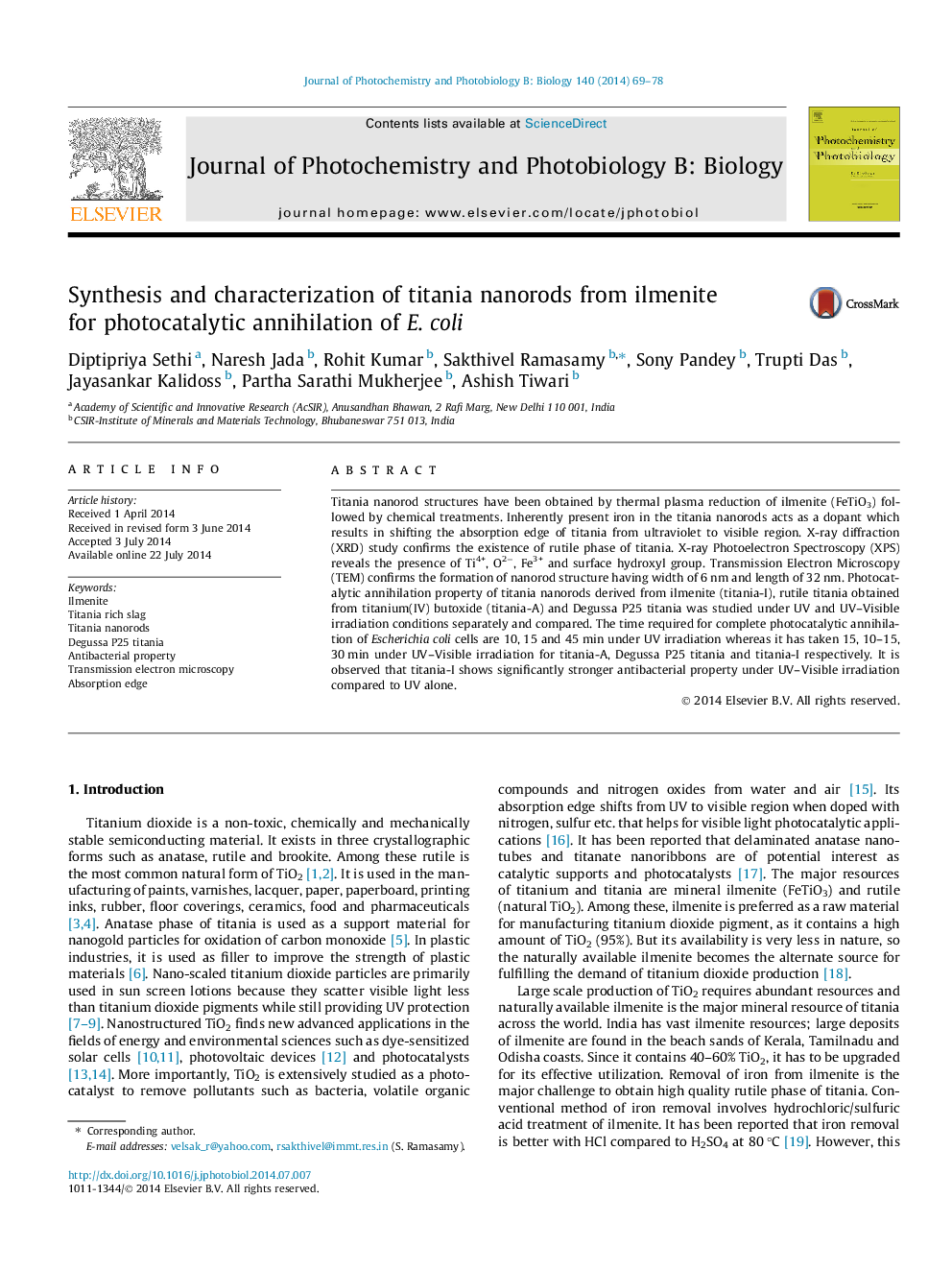| Article ID | Journal | Published Year | Pages | File Type |
|---|---|---|---|---|
| 29931 | Journal of Photochemistry and Photobiology B: Biology | 2014 | 10 Pages |
•Ilmenite could be used as a source for preparation of titania nanorods.•Inherently present iron impurity in titania nanorods acts as a dopant.•Iron impurity in titania nanorods shifts the absorption edge from UV to visible region.•Titania nanorods exhibit stronger photocatalytic annihilation of E. coli in UV–Visible than UV alone.
Titania nanorod structures have been obtained by thermal plasma reduction of ilmenite (FeTiO3) followed by chemical treatments. Inherently present iron in the titania nanorods acts as a dopant which results in shifting the absorption edge of titania from ultraviolet to visible region. X-ray diffraction (XRD) study confirms the existence of rutile phase of titania. X-ray Photoelectron Spectroscopy (XPS) reveals the presence of Ti4+, O2−, Fe3+ and surface hydroxyl group. Transmission Electron Microscopy (TEM) confirms the formation of nanorod structure having width of 6 nm and length of 32 nm. Photocatalytic annihilation property of titania nanorods derived from ilmenite (titania-I), rutile titania obtained from titanium(IV) butoxide (titania-A) and Degussa P25 titania was studied under UV and UV–Visible irradiation conditions separately and compared. The time required for complete photocatalytic annihilation of Escherichiacoli cells are 10, 15 and 45 min under UV irradiation whereas it has taken 15, 10–15, 30 min under UV–Visible irradiation for titania-A, Degussa P25 titania and titania-I respectively. It is observed that titania-I shows significantly stronger antibacterial property under UV–Visible irradiation compared to UV alone.
